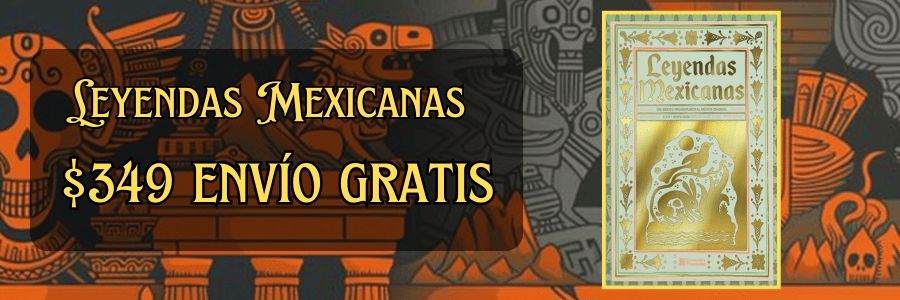Mixtec Textile Art: Weaving Techniques and Cultural Expression
The rich tradition of Mixtec textile art, originating from the Mixteca region of Mexico, is a vibrant cultural treasure characterized by intricate weaving techniques and profound cultural expression. The Mixtec people, one of the ethnic groups within Mesoamerica, are known for their exceptional craftsmanship, particularly in textiles, where they have cultivated a unique synthesis of artistry, spirituality, and functionality. These textiles are not merely materials; they carry the stories, values, and beliefs of the Mixtec culture, expressed through vivid patterns and colors that encapsulate a rich history dating back thousands of years.
From pre-Hispanic times, the Mixtec have showcased their weaving skills through various forms of textile art, including clothing, ceremonial items, and daily-use objects. The traditional fabric known as "tapete" or "rebozo" exemplifies the intricate artistry utilized in this cultural landscape. Handwoven with materials such as cotton and wool, these textiles are often dyed using natural pigments derived from plants, minerals, and other organic sources. The vibrant colors and intricate designs seen in Mixtec textiles are not arbitrary; they signify important cultural meanings and are often linked to various aspects of life, spirituality, and the environment.
Mixtec textiles are well-known for their elaborate geometric patterns and symbolic motifs. Each design carries with it a story that reflects the community's relationship with the cosmos, fertility, agriculture, and myth. For instance, the use of vibrant blues, deep reds, and earthy browns can be observed in the textiles, each color resonating with specific meanings. Blue might symbolize the sky and water, while red may represent life and sustenance. The choice of designs, colors, and patterns serves as a visual lexicon that communicates the identity and heritage of the Mixtec people.
The weaving techniques employed by the Mixtec are integral to the cultural significance of their textiles. Traditionally, they utilize backstrap looms, a type of weaving apparatus that allows for portability and intimacy with the weaving process. This approach fosters a close connection between the weaver and her work, where the rhythm of weaving becomes a form of meditation and reflection. Various weaving techniques are applied, including brocade and supplementary weft, which further enrich the textures and embellishments seen in Mixtec textiles. By employing these methods, artisans create pieces that are not only functional but also speak to the spirituality and relationality intrinsic to Mixtec life.
In contemporary Mixtec communities, the preservation and transmission of weaving knowledge is a pivotal aspect of cultural identity. Elders and masters often pass down their skills to younger generations, ensuring that the techniques, stories, and cultural heritage remain alive. This intergenerational knowledge transfer fosters communal bonds while providing a platform for young artisans to express their creativity in ways that honor tradition. As a result, the textile arts serve as powerful mediums of resistance against cultural erasure and globalization, allowing mixtecos to assert their identity in an increasingly homogenized world.
The sociopolitical histories of the Mixtec people have often been turbulent, marked by colonization, displacement, and socio-economic challenges. Despite these adversities, the art of weaving has remained a vital emblem of identity and autonomy for the Mixtec. Through textile art, the Mixtec have reaffirmed their presence, articulating their narratives of resilience and cultural pride. Textiles have not only served functional purposes but have also become items of economic significance, providing an avenue for artisans to sustain their communities and livelihoods amidst neglect and marginalization.
Typically, textile art in the Mixtec culture is closely linked with ceremonial practices. Certain textiles are crafted specifically for rituals, festivals, and rites of passage, underscoring their sacred importance. For instance, rebozos are often worn by women during ceremonies, symbolizing fertility, motherhood, and protection. The act of weaving itself is seen as spiritual, with weavers often invoking ancestral spirits to guide them during the process. These revered rituals combine artistry with spirituality, reflecting a worldview where the mundane and sacred intertwine seamlessly.
In recent years, the desire for ecological sustainability has influenced the way textiles are produced. Many artisans have started moving away from synthetic dyes and materials, reverting to traditional methods that utilize locally sourced natural dyes. This renewal not only helps preserve the environment but also enhances the cultural significance of textiles. By embracing ecological practices, the weavers reinforce their connection to the land and assert their identity as custodians of their heritage.
Artisans currently face various challenges, including globalization and market dynamics that often undervalue their work. Large-scale textile manufacturing, which typically prioritizes speed over quality, threatens the survival of traditional weaving methods. Consequently, many Mixtec weavers strive to find a balance between maintaining traditional techniques while adapting to the modern marketplace. Collaborations with designers and brands that appreciate artisanal craftsmanship have emerged, fostering cultural respect and ensuring artisans receive fair compensation for their labor.
The Mixtec community’s textile art also leverages social media and digital platforms to reach broader audiences. By showcasing their work online, artisans can gain visibility and establish a global market for their textiles. This engagement has resulted in a revitalization of interest in traditional crafts, as consumers increasingly seek unique, handmade items with stories behind them. This reinvigoration of cultural pride through digital platforms highlights how traditional practices can adapt to modern realities without losing their essence.
Moreover, exhibitions and cultural festivals have become platforms for Mixtec artisans to share their skills and educate the public about their rich heritage. These events not only celebrate their artistry but also position textile art as a form of storytelling that highlights the struggles, accomplishments, and aspirations of the Mixtec people. Through these narratives, the textiles transcend their materiality, allowing them to function as cultural archives that document history, identity, and community resilience.
In academia, there has been a growing interest in the study of Mixtec textiles from anthropological, sociological, and art historical perspectives. Researchers aim to explore the meanings behind designs, analyze the social structures within the weaving communities, and understand the impact of globalization on traditional practices. This interdisciplinary approach contributes to a more profound appreciation of textile art beyond its aesthetic value, recognizing its potential as a tool for cultural expression, empowerment, and sustainability.
In conclusion, Mixtec textile art represents a remarkable interplay of weaving techniques and cultural expressions that embody the stories and identity of a resilient community. At the intersection of artistry and spirituality, these textiles reveal the deep-rooted connection the Mixtec people have with their land, their ancestors, and their communities. While navigating the complexities of modernity and globalization, the Mixtec beautifully continue to weave their narratives into the fabric of contemporary society, ensuring that their cultural legacy endures for generations to come. These textiles are more than mere objects; they are living testimonies of heritage, artistry, and resilience. As the world becomes increasingly interconnected, the celebration and preservation of Mixtec textiles gain greater urgency, highlighting the need for respect, appreciation, and understanding of cultural traditions and the vital narratives they convey.
Explore More:
| The Role of Intellectuals in Shaping Mexican Policy Post-Revolution |
| Mexico’s Growing Tech Industry: A Look at Innovation Hubs |
| The Battle of Puebla: A Victory That Reverberated Around the World |
| The Influence of Mexican Muralists on 20th-Century Art Movements |
| The Social Divisions Highlighted by Mexico’s War of Reform |
| The French Empire’s Ambitions in Latin America: The Mexican Adventure |
| The Role of Disease and Hardship in the Mexican-American War |
| The Impact of the Mexican-American War on U.S. and Mexican Relations |
| Colonial Mexican Baptismal Records: Insights into Social Hierarchy and Race |
| The Rise of Mexican Cinema: From Local to Global Recognition |



